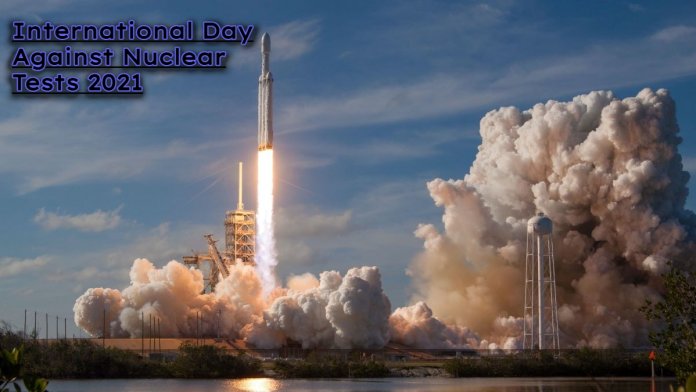Hello Readers!
In today’s blog we will discuss the United Nations International Day against Nuclear Tests. It is observed every year on 29 August. This year marks the 12th International Day against Nuclear Tests. We will let you know about this day, its objectives, importance and other facts. Keep reading to know all about this day.
Background
Kazakhstan initiated the resolution for International Day Against Nuclear Tests, along with several sponsors and cosponsors, to commemorate the closure of the Semipalatinsk Nuclear Test Site. the Republic of Afghanistan along with several sponsors and cosponsors initiated the resolution.
The first International Day against Nuclear Tests was observed on 29 August 2010.
Objective
The purpose is to raise awareness and educate people about the effects of nuclear weapon test explosions or any other nuclear explosions, and the necessity to stop them as one of the ways to achieve the goal of a nuclear-weapon-free world.
Why 29 August?
The Semipalatinsk nuclear test site in Kazakhstan closed on August 29, 1991, marking its closure anniversary. It demonstrates that attempts to end nuclear testing can be successful, and it brings hope that all nuclear weapons will be destroyed one day.
First Ever Nuclear Test
On July 16, 1945, the United States Army conducted the first nuclear test, known as Trinity, in a desert site in New Mexico. The test provided the United States the confidence to attack Hiroshima and Nagasaki with atomic bombs in August 1945. Approximately 200,000 people died, and survivors suffered from cancer.
Nuclear testing by the United States and the Soviet Union sparked the Cold War, which lasted until 1991, when the Soviet Union was dissolved. Between 1945 and 1996, a total of 2000 nuclear test explosions were carried out.
Significance of the day
It emphasizes the dangers of nuclear testing
Throughout history, nuclear testing has exposed communities to nuclear radiation and radioactivity, with disastrous consequences.
Moving towards better sustainable energy
Nuclear energy isn’t just for bombs. Nuclear power plants are a source of energy in some countries around the world, and the volatility of nuclear energy must be seriously considered in order to shift to more sustainable sources of power generation.
For a brighter future
A world without nuclear weapons is utopian, and it will undoubtedly lead to better dialogue between countries rather than reliance on warfare.
What is Semipalatinsk nuclear Test Site
The Semipalatinsk Test Site was the main testing place for the Soviet Union’s nuclear weapons were first tested. It’s in Kazakhstan’s north-east corner. The scientific buildings were around 150 kilometres west of Semipalatinsk (later renamed Semey).
From 1949 through 1989, the Soviet Union conducted 456 nuclear tests at this location, including 340 underground shots and 116 atmospheric tests.
Comprehensive Nuclear Test Ban Treaty ( CTBT)
CTBT is the main mechanism for eradicating nuclear weapons testing. It was adopted by the United Nations General Assembly on 10 September 1996. To date, the treaty has been signed by 185 countries and ratified by 170. To enter into force, the Treaty must be ratified by states with significant nuclear capabilities.
International Day for total elimination of Nuclear Weapons
The UNGA has also proclaimed the 26th September of every year as the International Day for the Total Elimination of Nuclear Weapons to further the objective of the total elimination of nuclear weapons.
5 Facts about Nuclear weapons
1. The Chernobyl Accident
The Chernobyl power plant explosions emitted 100 times the radiation of the atomic bombs dropped on Hiroshima and Nagasaki during World War II.
2.The most powerful nuclear weapon ever
With a mushroom cloud 25 miles wide and 40 miles high, Russia’s Tsar Bomba is the single most powerful weapon ever assembled by man.
3. Removing Outer Clothing
After a nuclear disaster, 90% of radioactive material can be disposed of by removing one’s outer clothing.
4.Volatile Situations
Since 1999, three nuclear power plant accidents have occurred in Japan.
5.Rethinking Nuclear Energy
Following the nuclear disaster in Japan in 2011, many countries are looking for alternative energy sources, with Germany planning to close all of its reactors by 2022.
With this we come to the end of this blog. We mentioned all the relevant points related to International Day against Nuclear Tests and its importance.
Keep reading on hranker for more such content.




